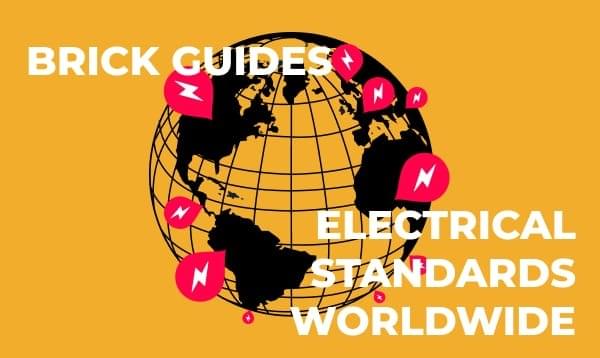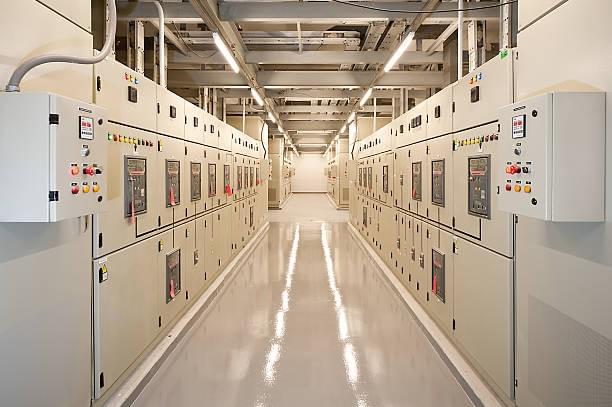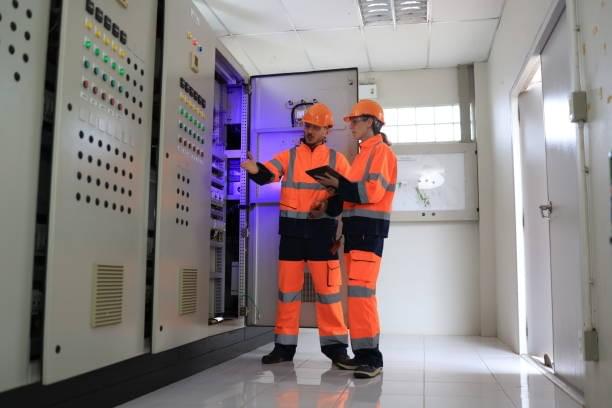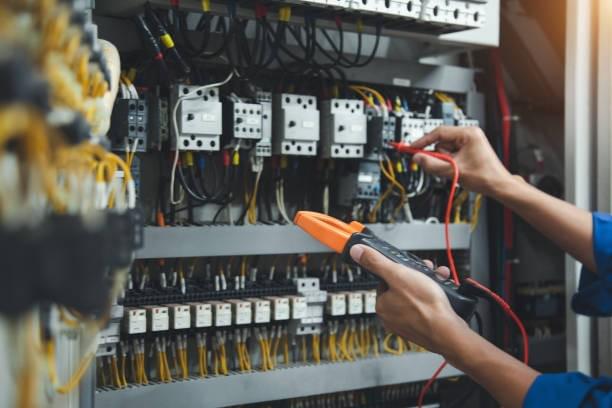Are you navigating the complex world of global electrical standards? If your project involves power distribution equipment that must work across different regions, understanding the fundamental differences between North American UL891 low-voltage switchboards and Chinese GB7251.1/IEC61439 switchgear is absolutely essential.
Did you know that using the wrong standard can increase project costs by up to 40% and potentially cause critical safety compliance failures?
In this comprehensive guide, we'll explore the five crucial differences between these standards that impact design, safety, cost, and application. Whether you're an electrical engineer, project manager, or procurement specialist, this knowledge will help you make informed decisions for your next electrical infrastructure project.

1. Standard Systems and Certification Logic: Component vs. Assembly
The fundamental philosophical difference between UL891 and GB7251.1/IEC61439 lies in their certification approach.
UL891 Low Voltage Switchboards (North America)
- Component-Based Certification: Each independent component (circuit breakers, busbars, etc.) must be individually UL-certified
- Testing Methodology: Components are tested separately before assembly
- Responsibility: Manufacturers must use pre-certified components (e.g., UL489 circuit breakers, UL758 busbars)
- Market Access: Mandatory for North American projects under the National Electrical Code (NEC)
GB7251.1/IEC61439 Switchgear (China/International)
- Assembly-Based Certification: The entire switchgear assembly undergoes type testing
- Testing Methodology: Complete assembled unit tested for temperature rise, short circuit strength, etc.
- Responsibility: Manufacturer is responsible for overall performance, regardless of component origin
- Market Access: Standard across China and IEC member countries, often non-mandatory
Industry Insight: This fundamental difference means UL891 equipment typically costs 80-150% more than comparable IEC equipment due to the requirement for certified components and more rigorous individual testing.

2. Safety Design Philosophy: Redundancy vs. Efficiency
The second major difference is in the safety design approach, reflecting cultural and regulatory priorities.
UL891 Safety Features
- Triple Protection Philosophy:
- Mandatory fully insulated busbars (complete covering)
- Independent compartmentalization with physical barriers
- Arc flash venting channels
- Short Circuit Protection: Often requires 200kA short circuit withstand capability (for high industrial zones)
- Flame Retardant Materials: Non-metallic parts must meet UL94 V-0 rating (self-extinguishing)
- Operational Safety: Front-only operation (rear access prohibited), mandatory warning labels
GB7251.1/IEC61439 Safety Approach
- Single/Dual Protection Philosophy:
- Typically only compartment separation with barriers
- Busbar insulation often optional
- Short Circuit Rating: Customized to customer requirements (typically 50-100kA)
- Flame Retardancy: Optional V-0 rating (often HB class is used)
- Operational Flexibility: Allows front and rear operation, warning labels not always mandatory
Real-World Example: A North American data center experienced 63% fewer electrical incidents after switching from modified Chinese switchgear to UL891-compliant equipment, primarily due to the enhanced insulation and compartmentalization requirements.

3. Structural and Material Differences
When examining the physical construction, significant differences become apparent:
UL891 Switchboard Construction
- Frame System: 2-2.5mm aluzinc-coated steel plate
- Busbar System: Fully insulated (UL758 certified), copper bar thickness increased by approximately 20%
- Circuit Breaker Installation: Fixed-type only (to avoid arc flash risks from draw-out connections)
- Door Locking Mechanism: Mechanical interlocks plus padlock points (preventing operational errors)
- Grounding System: Dedicated separate grounding busbar (cross-section 50% of phase conductors)
GB7251.1/IEC61439 Switchgear Construction
- Frame System: 3mm galvanized steel plate (rust resistance and higher mechanical strength)
- Busbar System: Bare copper bars with heat-shrink tubing or barriers
- Circuit Breaker Options: Supports both fixed and withdrawable types
- Door Locks: Simple mechanical locks
- Grounding System: Often uses shared frame grounding (cross-section typically less than 30% of phase)
Technical Comparison: For identical 630A incoming switchgear, UL891 equipment typically weighs approximately 40% more than GB7251.1/IEC61439 equipment due to material requirements and insulation standards.

4. Application Scenarios and Cost Analysis
The differences extend to where and how these systems are typically deployed:
UL891 Switchboard Applications
- Target Markets: North America, Middle East, Southeast Asia (American-standard projects)
- Typical Users: Tesla factories, Amazon data centers, multinational corporations
- Procurement Cost: High (approximately 1.8-2.5 times that of Chinese standard equipment)
- Lifecycle Cost: Lower (60% reduced failure rate, maintenance costs halved)
- Delivery Timeline: Extended (constrained by UL component procurement)
GB7251.1/IEC61439 Switchgear Applications
- Target Markets: China, Europe, Africa (IEC standard regions)
- Typical Users: Domestic manufacturing, municipal projects
- Procurement Cost: Low
- Lifecycle Cost: Higher (dependent on regular maintenance and component replacement)
- Delivery Timeline: Short (localized supply chain)

5. Integration Challenges and Global Project Solutions
One of the most significant practical challenges comes when trying to integrate these different standards:
Common Issues in Global Projects
- Chinese manufacturers often fail certification when attempting to convert standard switchgear to UL891 compliance
- North American companies face cost barriers when expanding into Chinese markets
- Hybrid solutions often face regulatory hurdles
Practical Solutions for Global Projects
- Early Design Integration: Use pre-certified UL busbar systems (like Eaton PowerBus)
- Key Component Replacement: Replace domestic circuit breakers with UL489 certified models
- Structural Enhancement: Add arc flash barriers and door locking mechanisms (requiring UL lab verification)
- Hybrid Approach: Implement "main switchboard UL891 + branch switchgear GB7251.1/IEC61439" mixed solutions to reduce costs while maintaining compliance
Success Story: A Jiangsu switchgear manufacturer supplied equipment for a Shanghai factory using this hybrid approach, reducing costs by 30% while maintaining regulatory compliance.

Making the Right Choice for Your Project
When deciding between UL891 and GB7251.1/IEC61439 equipment, consider:
Choose UL891 when:
- Your project is located in North America/Middle East or other regions requiring UL certification
- The end user is a multinational corporation requiring global standard uniformity
- The application has high safety risks (chemical plants, airports) requiring 200kA short circuit capacity
Choose GB7251.1/IEC61439 when:
- Project budget is limited and located in an IEC standard region
- Rapid delivery or frequent expansion/modification is needed (withdrawable units advantage)
- Load environment is moderate (shopping centers, standard factories)
Conclusion
UL891 serves as the "safety passport" for the North American market, while GB7251.1/IEC61439 switchgear represents the value-oriented choice for many global projects. Understanding these differences is crucial for making informed decisions in global electrical infrastructure projects.
At Nengfu Electrical, we specialize in providing efficient electrical system solutions that bridge these international standards. Our expertise in both UL891 and GB7251.1/IEC61439 systems allows us to deliver optimal solutions for any project requirement.
Have questions about which standard is right for your project? Contact our engineering team for a personalized consultation today.
About Nengfu Electrical: Nengfu Electrical specializes in efficient and reliable electrical system solutions and engineering services. Our product lines cover design, engineering & production of diesel & gas generators, electrical cabinets, and EPC services, earning a reputation for excellent product performance and reliability.
